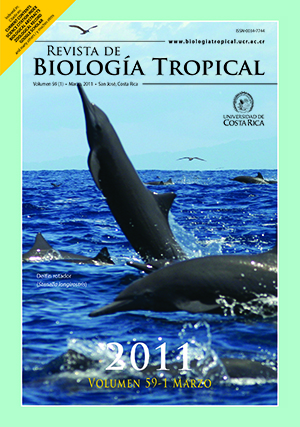Abstract
Wetlands are very important sites for palynological studies, since they represent one of the most suitable environments for fossil pollen preservation. The aim of this work was to determine, by palynological analysis of lacustrine sediments, the vegetal communities and the predominant environment during the Holocene in NW of Iberá. Two lagoons were studied: San Sebastián and San Juan Poriahú. Sediment samples were obtained with witness using a “Levingstone square-rod sampler”, processed with Faegri e Iversen techniques and dated with C14. The palynological graphs were divided in zones using the Tilia program. The palynological analysis allowed visual-izing diverse changes in the vegetation: from 6 140±50 to 5 170±100 a. C., the NW of Iberá was characterized by marsh-herbaceous vegetation and arboreal vegetation typical of dry vegetation. From 5 170±100 to 3 460±60 a. C., a decrease in the species frequency, typical of wet environments, is produced, and the clogging of the waterbody, from 3460±60 a. C. onwards, while continuing the dominance of herbaceous vegetation typical of these environments, the arboreal pollen, indicates the beginning of a hygrophilous forest development.
Comments

This work is licensed under a Creative Commons Attribution 4.0 International License.
Copyright (c) 2011 Revista de Biología Tropical






